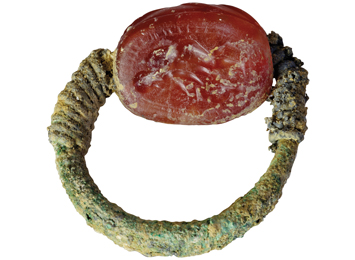
Archaeologists of the IMPERO project, together with Michigan State University, have been researching two historically valuable cities in southern Tuscany, Italy for five years.
IMPERO project "Interrelated mobility of people and economy along the river Ombrone".
"The past five years have produced some exciting finds, but this season has been particularly successful," says the team leader.
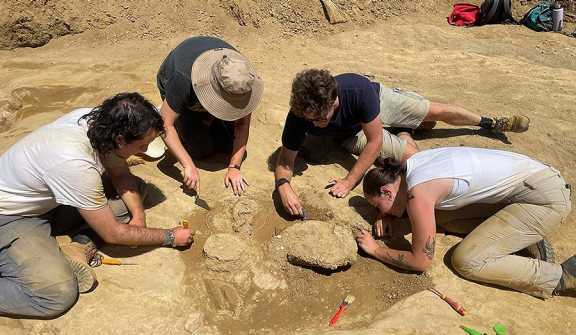
University at Buffalo and international students excavate one of the burials at Podere Cannicci in Tuscany. Photo by IMPERO Project
Etruria - an ancient kingdom, and then a confederation of 12 city-states, in the northwestern part of Italy. Etruscans - created a developed civilization that preceded the Roman one and had a powerful influence on it (engineering art: construction of arched vaults; insignia (signs of power), features of political organization, structure and weapons of the army, gladiator fights, chariot races, certain funeral rites, etc. ). The Etruscans created a federation of city-states before the Romans. Etruscan society was the oldest society on the Apennine Peninsula. They spoke the Etruscan language. (Wikipedia)
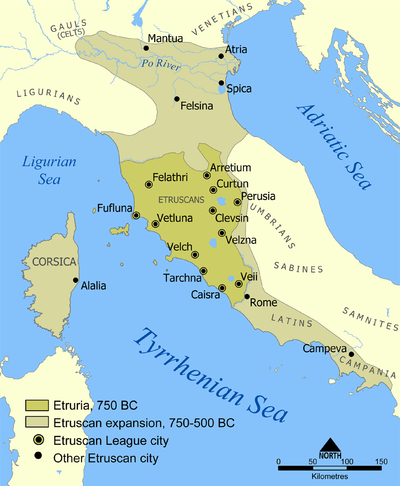
The map shows the spread of the Etruscan civilization and the twelve cities that made up the League of Etrurian Cities. Wikipedia
"We discovered three Late Etruscan tombs that were completely intact, shedding new light on the social representation of the families that lived and worked in the village," writes Sebastiani, an associate professor of classics at the University of Buffalo who authored the paper, which presents the latest research for the first time.
"These findings show us that we should talk more about cultural and social osmosis, and not about the subordination of one population to another."
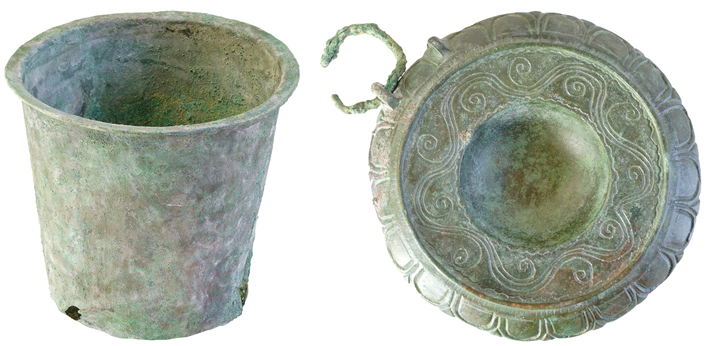
Bronze dishes. IMPERO Project
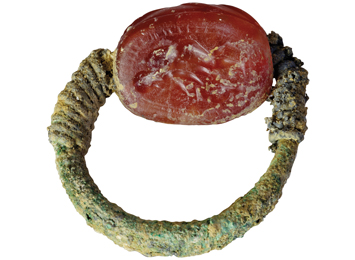
The ring was found in one of the burials. Photo by IMPERO Project
The round tombs are not deep in the hill. The fact that the burials were preserved for more than 2,400 years and were not looted adds to the uniqueness of the find, which is extremely rare.
Scientists have already analyzed some of the discovered items. These are urns with the remains of two people, many fine ceramics, iron strigilas (tools for cleaning the body), bronze rings and gold earrings.
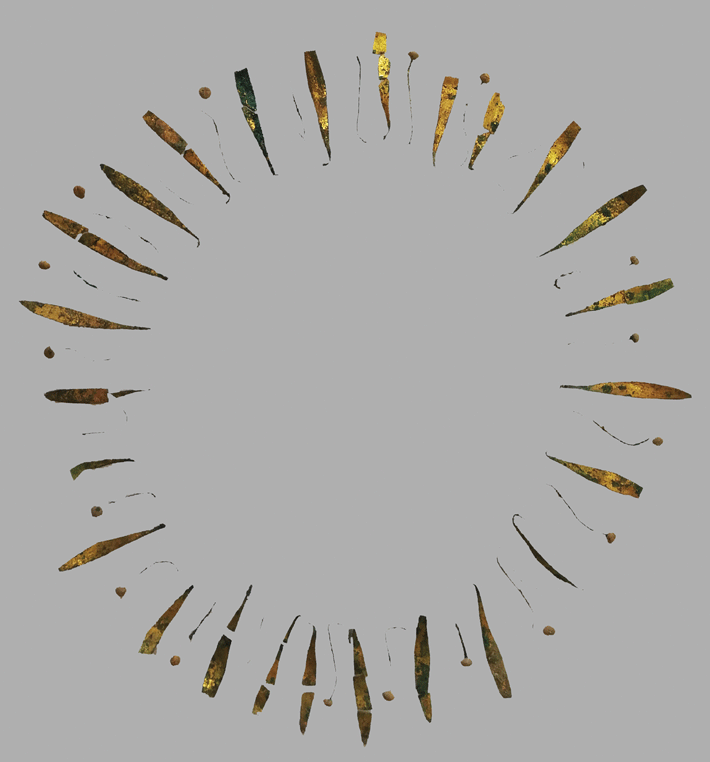
Bronze olive leaves and gilt crown pins.
Also thanks to archaeobotanical studies of organic remains, such as seeds, specialists were able to reconstruct the landscape and environment of the ancient site.
Analyzes of the remains of the bones will still be conducted.
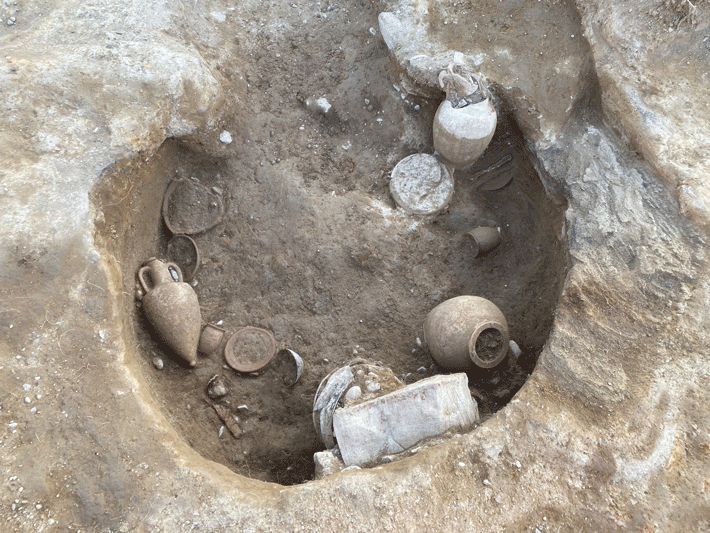
Discovered ceramics.
"The project reveals new fragments of the intricate puzzle of historical settlements in Etruria during the transitional period of the Roman conquest, their development into an imperial political system, long late antiquity and the rise of medieval society" - Sebastiani.
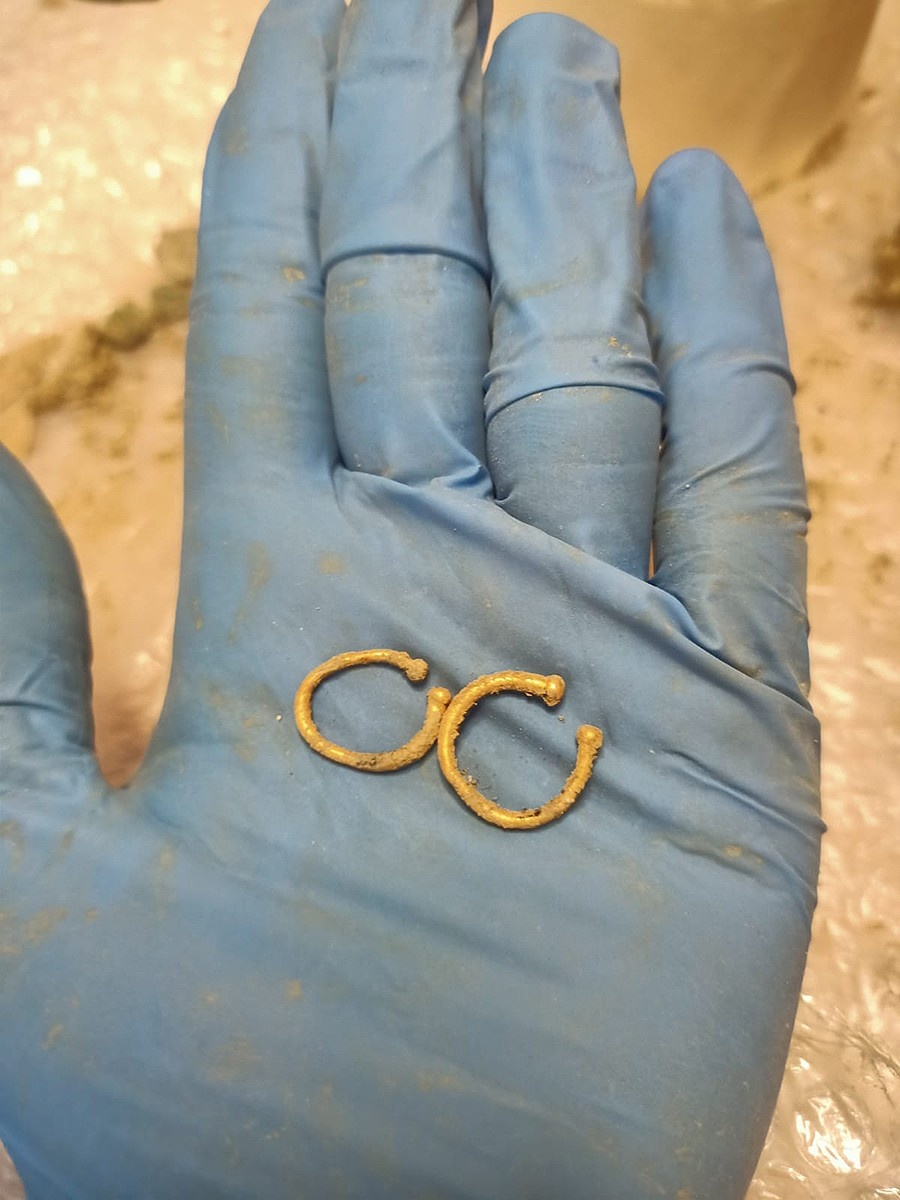
Gold earrings.

